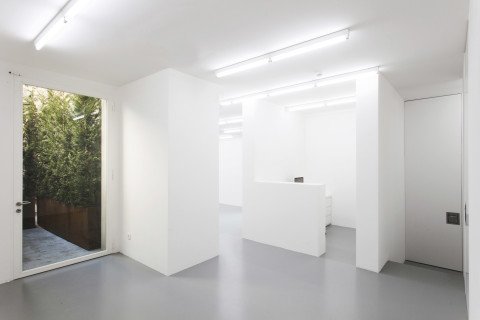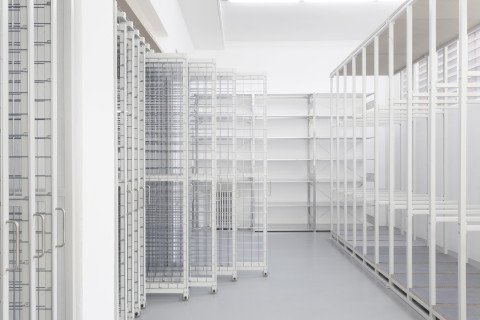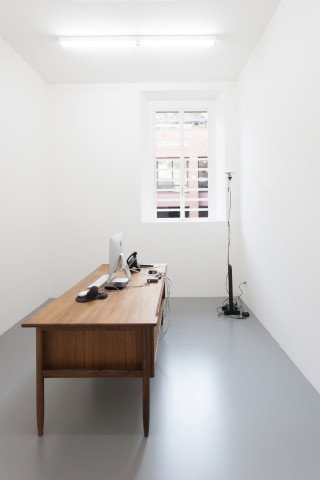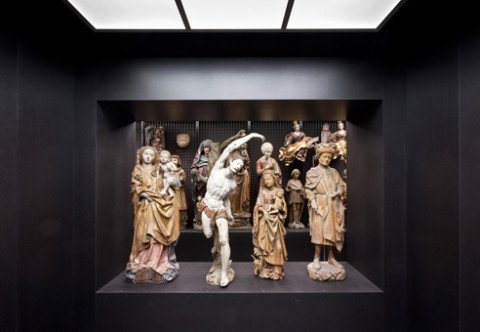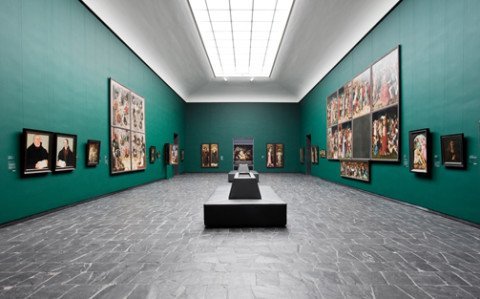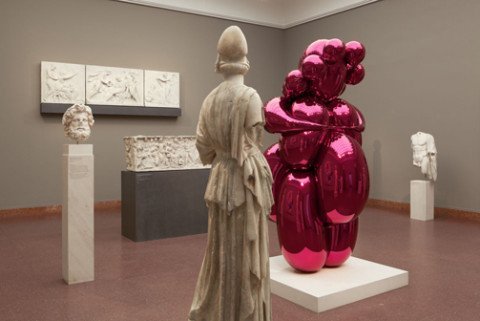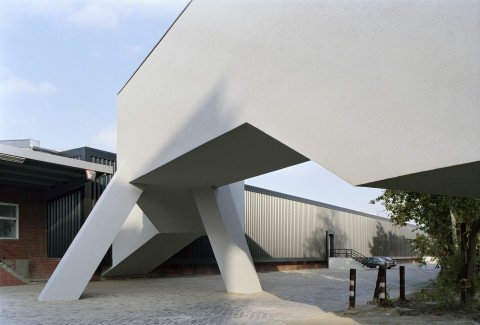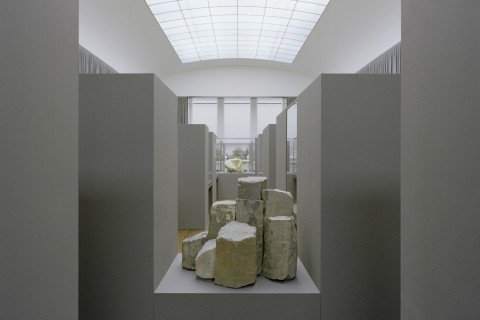A new gallery designed by Kuehn Malvezzi respects the rule: take a step back
- Kuehn Malvezzi, Giò Marconi gallery, Milan, 2015, ph. Giovanna Silva.
- Kuehn Malvezzi, Giò Marconi gallery, Milan, 2015, ph. Giovanna Silva.
- Kuehn Malvezzi, Giò Marconi gallery, Milan, 2015, ph. Giovanna Silva.
- Schaulager Liebeghaus Museum, Depository show commission, 2009. ph. Norbert Miguletz.
- Staedel Museum, Collection display, Frankfurt, 2012.
- Kuehn Malvezzi, “Jeff Koons, The painter the sculptor”, Frankfurt, 2012.
- Kuehn Malvezzi, Flick Collection, ph. Ulrich Schwarz.
- Kuehn Malvezzi, Gustav Carus, ph. Ulrich Schwarz.
Art, especially New Art, needs time and space to be developed and displayed. With this idea in mind, in the early 80s Urs and Christel Raussmüller set up their collection in a former textile factory in the city of Schaffausen, on the banks of the Rhine. Prestigious works were installed, including Joseph Beuys’ Das Kapital Raum 1970-1977 at its core. In order to make fit it in, the ceiling was cut away between the walls.
This is a story that Italian architect Simona Malvezzi likes to offer to explain what architecture should do its relation with art: take a step back.
Malvezzi is the founder, together with German brothers Wilfried and Johannes Kuehn, of the KUEHN MALVEZZI firm, established in Berlin in 2001. They first gained recognition for their exhibition-focused work – from Documenta 11 in Kassel to the extension of the Christian Flick’s Collection – which they evolved to the level of “curatorial design”, an expression coined by Wilfried Kuehn himself. “Architecture shouldn’t show. It should create spaces that are functional to the purpose of the exhibition and foster the relation between the artwork and the viewer” says Simona Malvezzi at the opening of Giò Marconi’s brand new venue in Via Tadino 20 in Milan, formerly rented out to Galleria Zero. Her studio has completely renovated it, using the same codes applied exactly 10 years ago to the space in Via Tadino 15 that Mr Marconi was previously sharing with his father Giorgio – founder of Fondazione Marconi – who’s now getting ready for a big retrospective on Arte Povera in time for Expo. “We prefer a restricted palette of colors stripped down to two, basic standard components – for example we used handles that you might normally see at the gym – and un-textured surfaces” adds Malvezzi. Anything that might distract from the presence and the fruition of the work of art is removed, and this is also the aim of architecture, to make the surroundings invisible.
But if the archetype of the contemporary gallery is the modernist atelier of Le Corbusier – which should be painted any color as long as it’s white – when it comes to historic art, the “white cube” gives way to another kind of environment. “Traditionally there is no demarcation between the living space and the working space of the artist. Until 19th century the iconography of the atelier shows rooms filled with paintings hanging from colorful walls: often it’s tapestry”. In order to evoke the original setting, old masters keep to be shown surrounded by nuances that blend with the colors found in the works themselves. What is more interesting is that this clear line between the modern way and the old fashioned ways is starting to blur, and as Malvezzi suggests “more and more contemporary art is being exhibited in historic venues”.
Less than three years ago KUEHN MALVEZZI curated with Vinzenz Brinkmann “Jeff Koons. The painter and the Sculptor”, an encyclopedic show in Frankfurt, where the work of the American artist was in dialogue with the permanent collection of antiques at the Liebieghaus museum for what was at the time his biggest ever retrospective. Architecture here worked to create a bound between the two worlds. “The display didn’t make a distinction between old and new, but Koons’ pieces were staged to revamp the backing collection. You couldn’t really tell what was front row and what was background” muses Malvezzi. “We have created an interesting ambiguity”. Perhaps the elegant and skillful display was suggesting that art belongs to the time when it is enjoyed.
February 24, 2015

